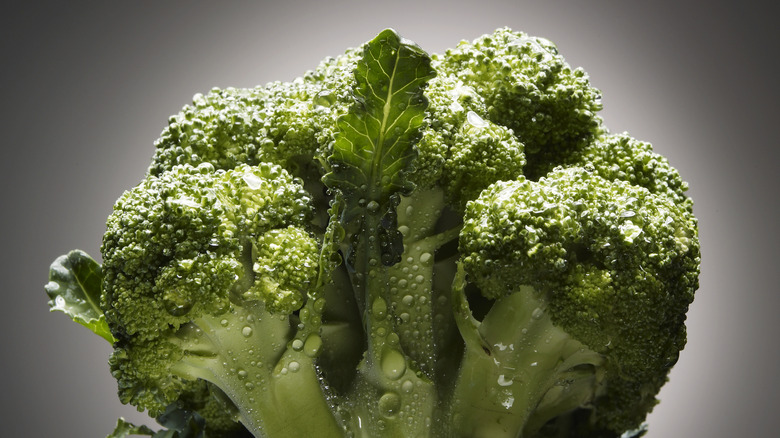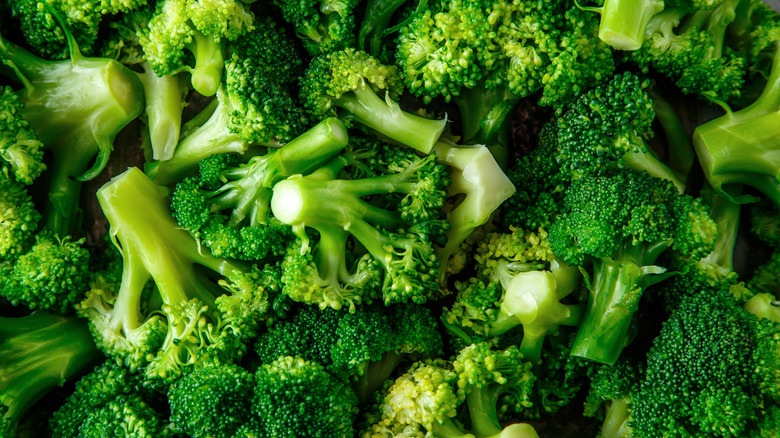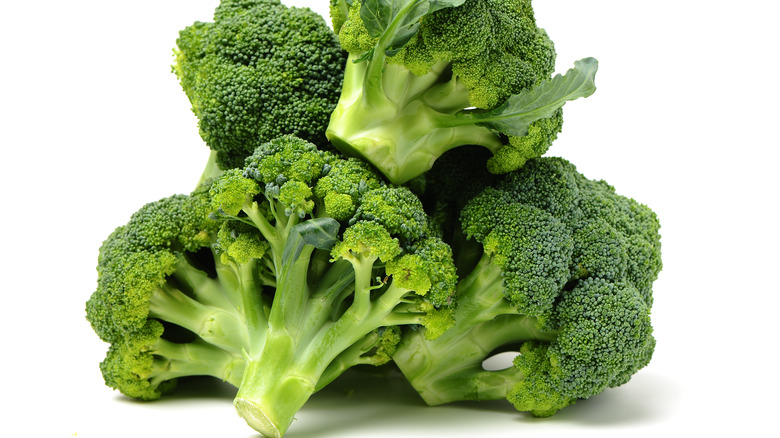Is That Waxy Coating On Broccoli Normal?
Broccoli may often be portrayed as the least popular vegetable among kids, but that's not exactly true. In 2019, a survey conducted by OnePoll (on behalf of VeggieTracker) revealed that broccoli didn't even crack the top five of the most disliked vegetables. So where exactly does this hate for the waxy green vegetable come from — and what exactly is that waxy coating?
For starters, broccoli is said to taste either bitter or bland, and it is sometimes mushy when it has been overcooked. Overall, though, those issues are more related to how the vegetable is cooked — not necessarily something wrong with it. While you can eat broccoli raw, cooking and seasoning it can make it more appetizing, and it doesn't take away from broccoli's health benefits. According to Healthline, broccoli is packed with vitamins — such as C and K — as well as minerals like potassium and iron. It's a great source of antioxidants, and it contains compounds that may help reduce the risk of heart disease. And that waxy coating? Totally normal.
That protective layer is a good thing
That slick coating on broccoli is a natural substance called cuticle or epicuticular wax. This protective wax covers the surface of many fruits and vegetables, as well as plant leaves and stems. It helps to prevent water loss and protects the plant from UV radiation, insects, and pathogens. In other words — it's a good thing!
In broccoli, the waxy coating is found on the surface of the florets and stems, and it can make the vegetable look shiny or glossy. That coating may also be a sign of freshness, so rather than seeing it as a cause for concern, you could consider it your little helper, assisting you in finding the freshest head of broccoli. If you have ever noticed that broccoli has a blue tint to it, you have this waxy coating to thank. It can sometimes distort the color of the vegetable, but it's not harmful to eat.
How to get rid of the waxy coating
The waxy coating on broccoli can make it slightly harder to cook, as it acts as a barrier to moisture and heat, but it shouldn't be a significant barrier to most cooking methods. It can, however, make it harder to season the broccoli, and some people just find it unappetizing. If you prefer to not have wax on your broccoli, you can remove it with a few simple methods.
According to The Oklahoman, you can simply run it under water and scrub the stem gently with a vegetable brush. You can also let the whole vegetable soak in some water or place it in boiling water for a few minutes to soften the cuticle and make it more tender, according to a scientific research paper shared on MDPI. Food Network says you can also peel the stalks of the broccoli with a vegetable peeler to remove the waxy coating, which is especially helpful if you are planning to roast or grill the broccoli: that allows it to cook more evenly and absorb more flavors.


